Foraged Red Clover Recipe: Wild Tabbouleh
Learn about the identifying characteristics of red clover (Trifolium pratense), its health benefits, and how to make a simple red clover recipe: wild tabbouleh.
Spring is the perfect season for foraging wild foods. This Spring in particular, I haven’t had to go much further than our new backyard to find loads of edible plants growing, from dandelions, to common daisies, grass onions, and red clover. Make sure to check out our Dandelion Salad post if you haven’t already.
Red clover is a plant I grew up snacking in France. The red clover flowers contain a delicious nectar. What I didn’t know until more recently was that red clover leaves can also be consumed. Instead of eating them plain, I ventured into making a wild tabbouleh recipe.
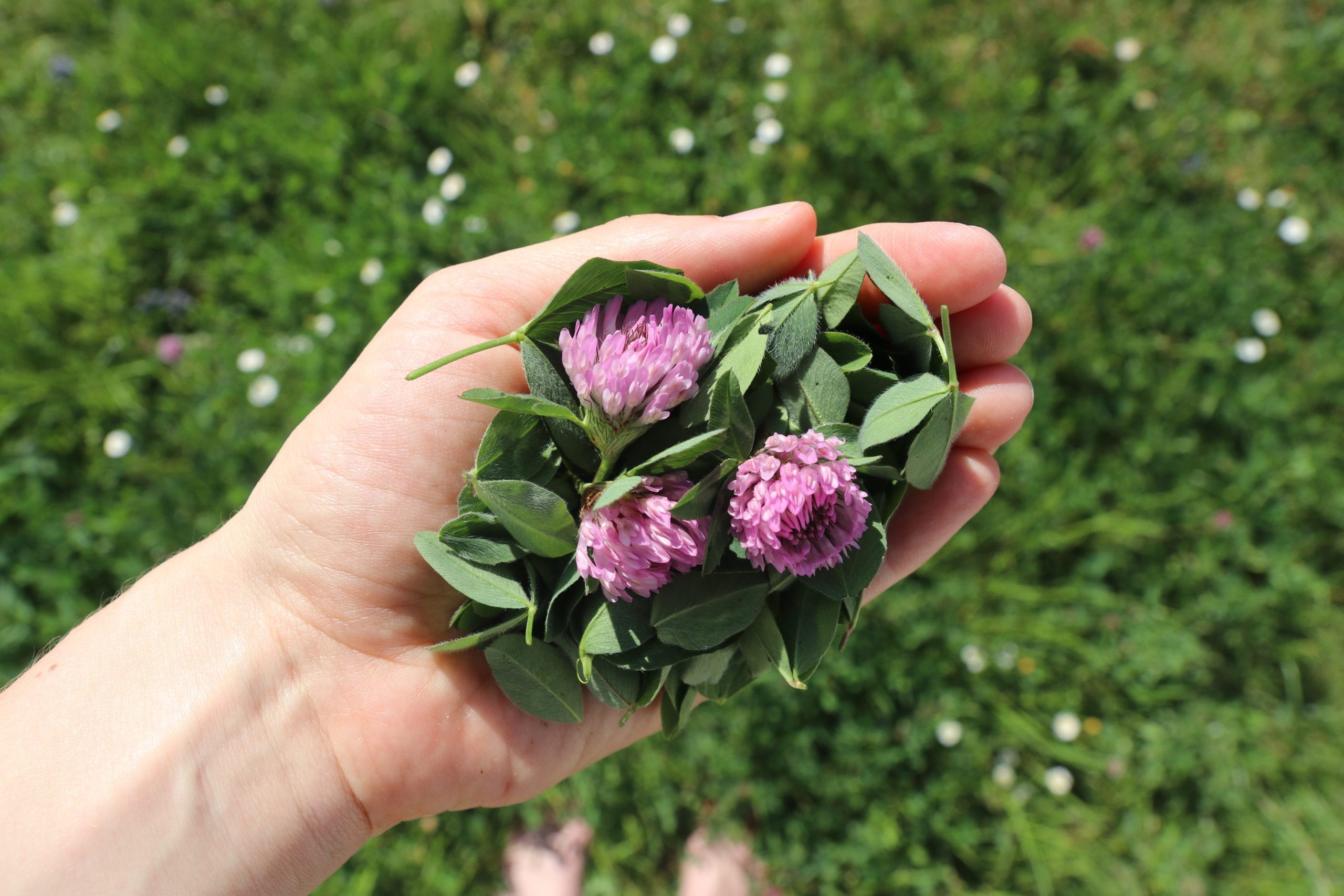
Red Clover Identification
DISCLAIMER: Do not consider this your full guide to foraging red clover. You should always be 100% certain of your plant ID. Lookalikes differ depending on where you live. Make sure to read our full Health Disclaimer. Also take into consideration contaminated areas (dog pee, pesticides, pollution runoff, etc.).
Scroll down to watch our full red clover video. Red clover (Trifolium pratense) is very common in Europe, Western Asia and northwest Africa. It is also cultivated in other parts of the world where it isn’t native.
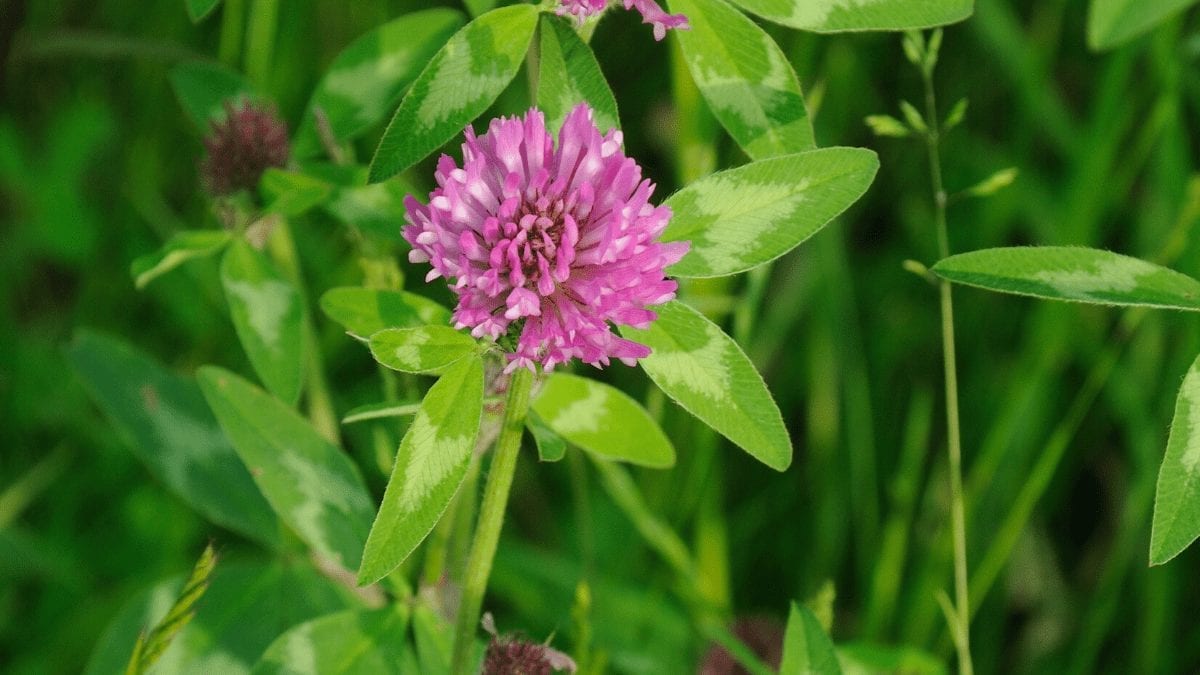
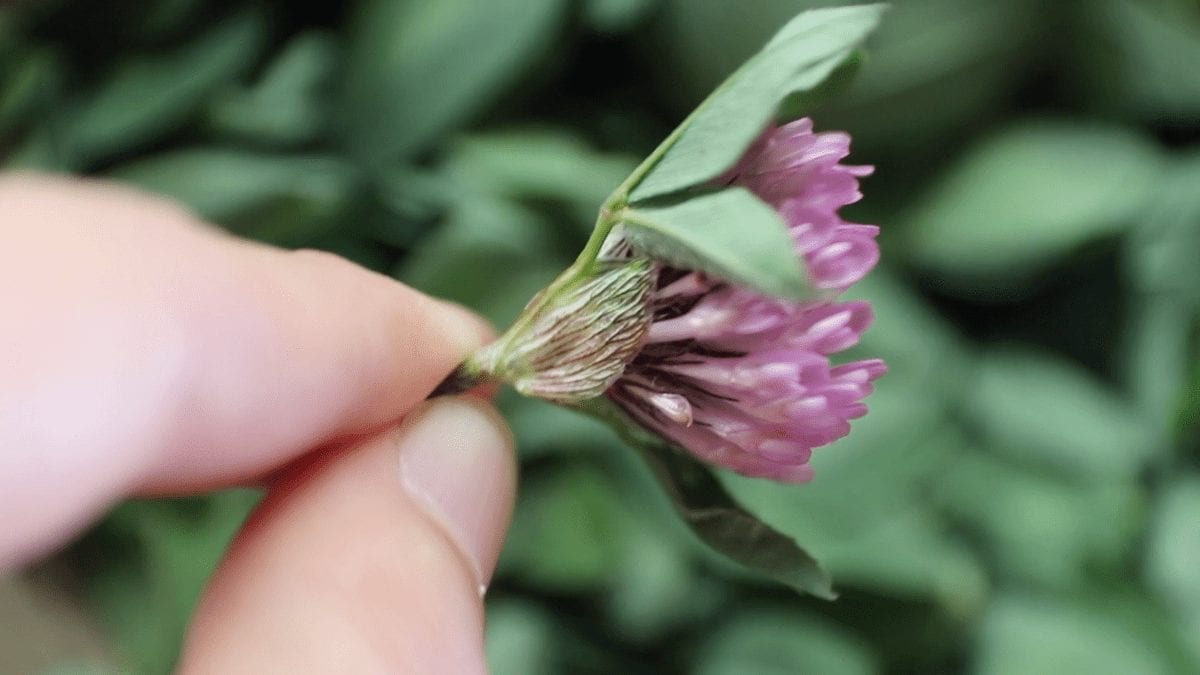
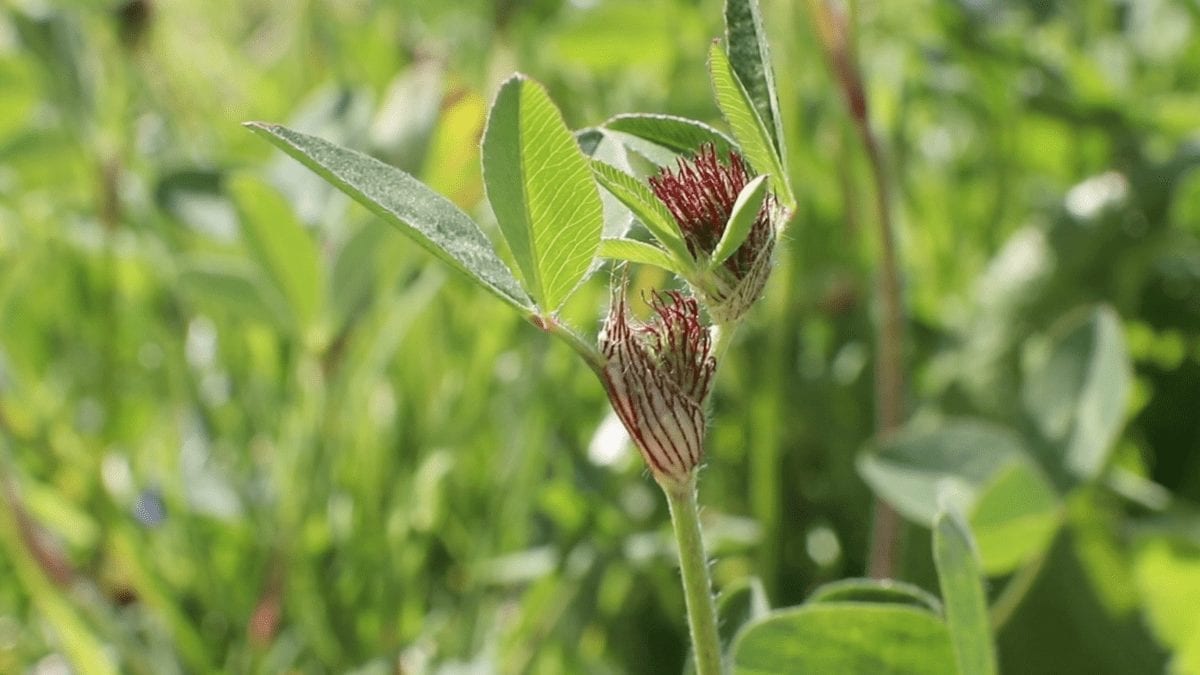
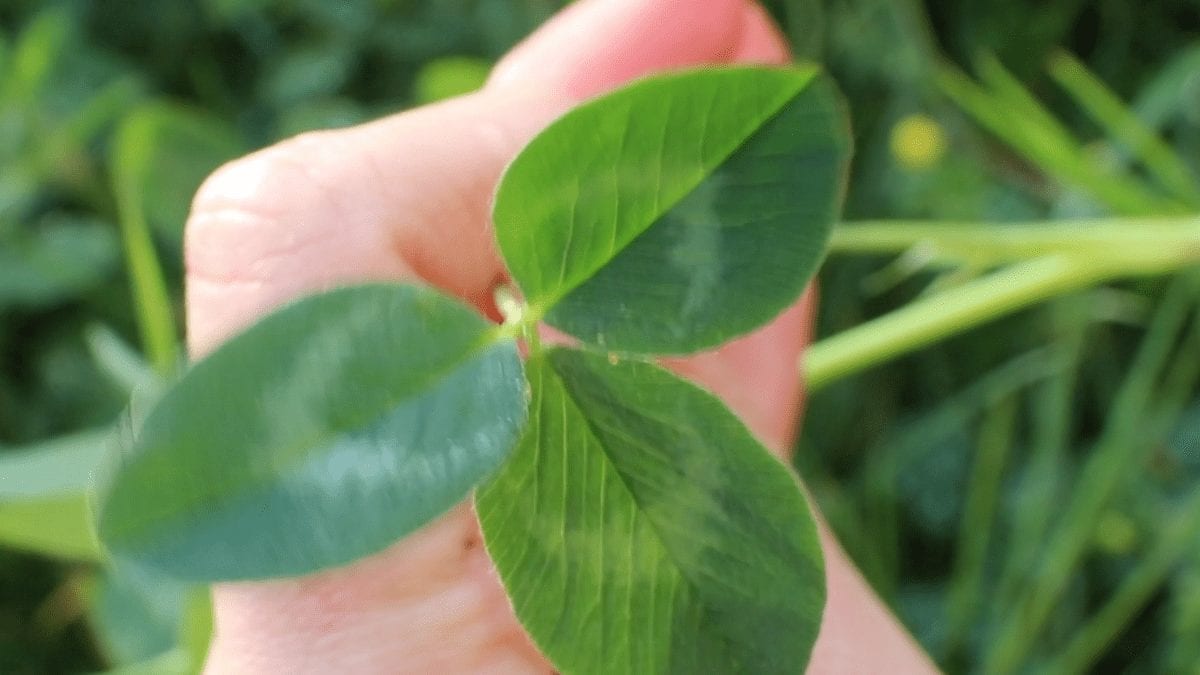
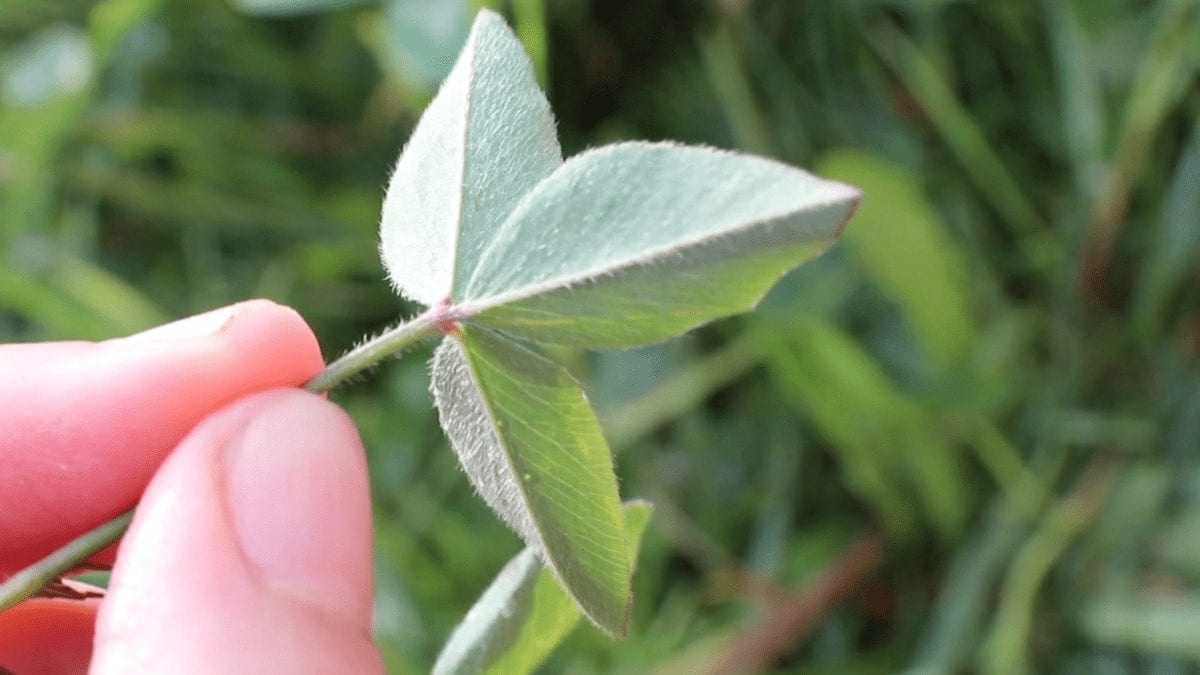
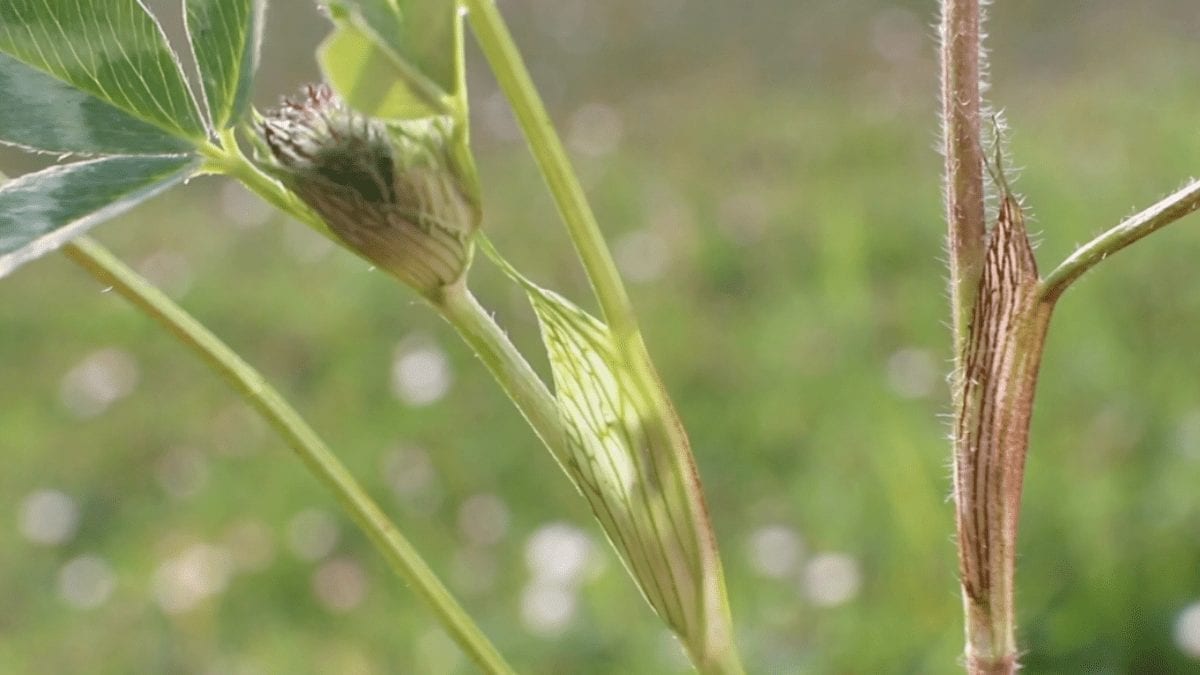
Red clovers often appear in clusters in sunny to mid-shady spots. They are a short-lived perennial. If the flowers are already in bloom, it’s very easy to notice them (if it’s your first time foraging red clover, wait for them to be in bloom). The leaves have 3 leaflets (15-30mm long) that have an upside down V shape on them. It’s important to look out for that V shape to not confuse the plant with the strawberry clover (Trifolium fragiferum) or alfalfa (Medicago satival; purple flowers). Red clover leaflets are lighter green on the underside and darker green on the top side; they’re a bit furry. The leaves are actually alternate on the stem. The stem is round and it branches out. Red clover has stipules with either purple or green veins. They’re shaped like a lance-head (lanceolate); they abruptly narrow to a bristle-like point. This part actually detaches.
The flowers bloom in a dense globular inflorescence at the very tip. The flowers are light to dark pink, getting paler the closer they are to the base. They’re 12-15mm long. It’s important to remember that there are stipules at the base of the inflorescence. Some lookalikes, like the strawberry clover (Trifolium fragiferum) don’t have this.
On the red clover flower, you’ll notice there’s a calyx, which is the collection of sepals, stuck to the base of the flower. The calyx has 5 tooth-like structures. The red clover flower has 5 petals. A large one above the others, two on the side, and two that are sort of stuck together.
The plant as a whole can get up to 40cm.
Before foraging, always learn about lookalikes. This will change depending on where you live. In my case in Switzerland, lookalikes include the white clover (Trifolium repens), the strawberry clover (Trifolium fragiferum), alfalfa (Medicago sativa), heart clover (Medicago arabica) which has dark stains on the leaflets, and the Oxalis genus that has heart-shaped leaflets.
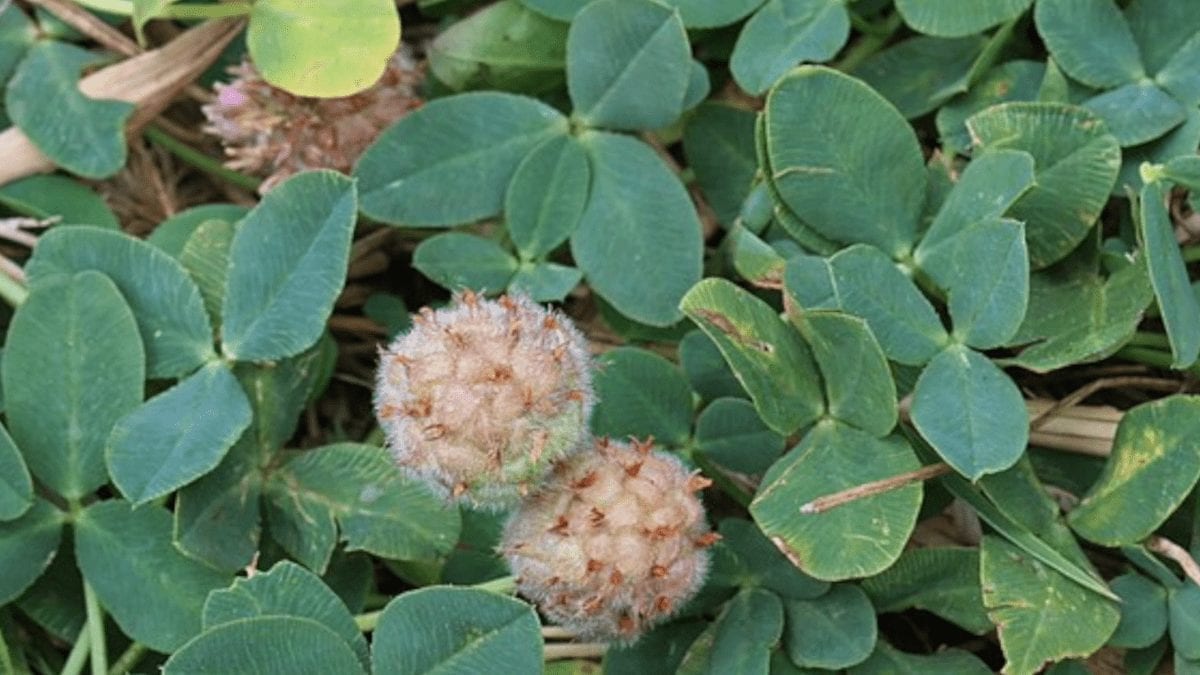
Strawberry clover (Trifolium fragiferum)
Credit: Christian Fischer
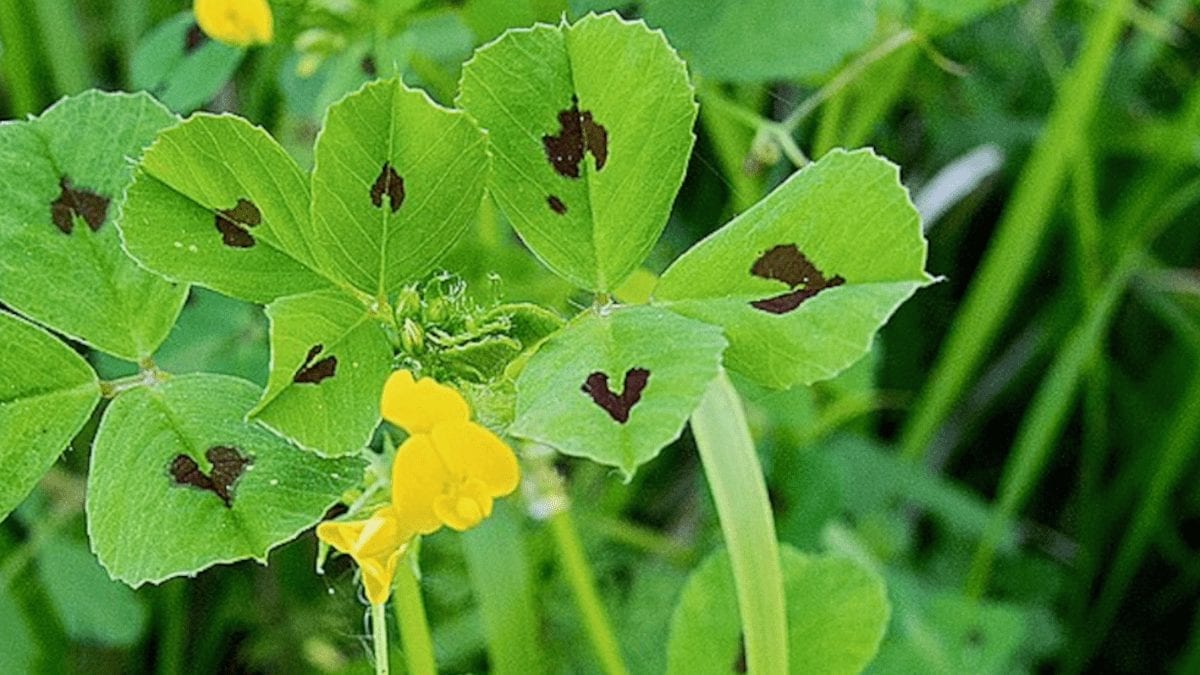
Heart clover (Medicago arabica)
Credit: Katya
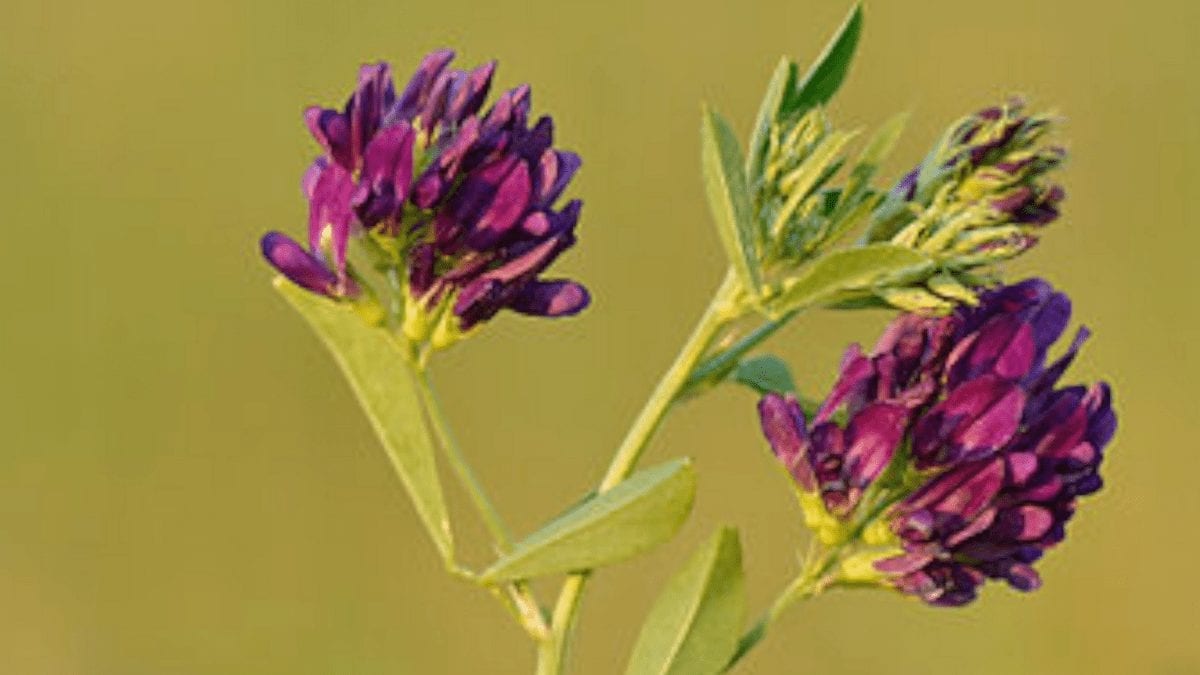
Alfalfa (Medicago sativa)
Credit: Ivar Leidus
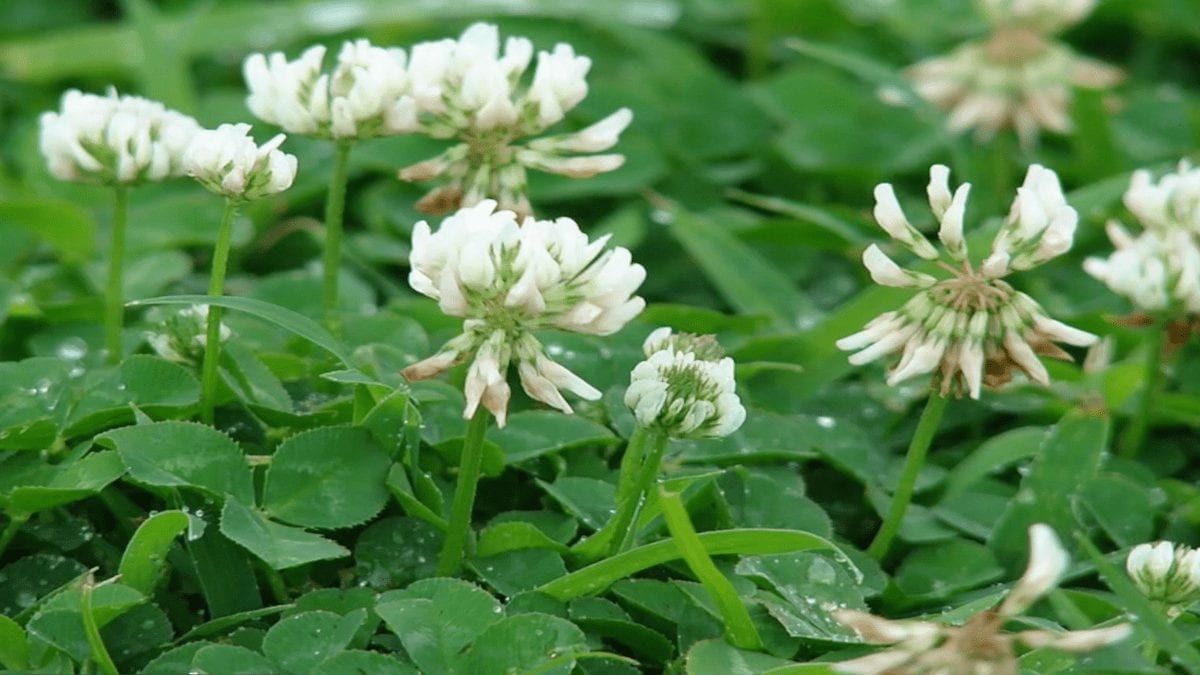
White clover (Trifolium repens)
Credit: Forest & Kim Star
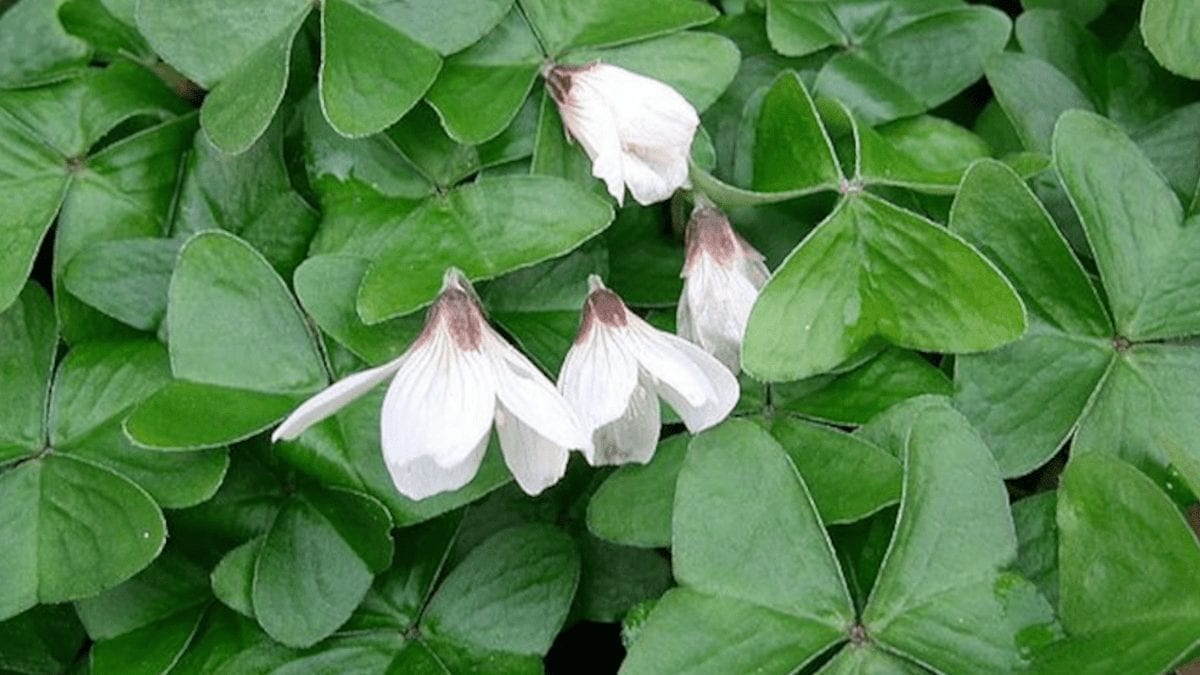
Oxalis genus
Credit: Kenpei
Consuming Red Clover
April is the perfect time to consume the young leaves as they are tastiest at this stage. May through September, the flowers can be consumed. The leaves can be eaten raw or cooked, and the flowers can be added as a garnish or made as a tea.
WARNING: Don’t consume ungodly amounts of this plant, and don’t let babies or toddlers consume it. Because of its phytoestrogen content, do not consume if you have endometriosis, ovarian cancer, breast cancer, uterine cancer, uterine fibroids, hyperthyroidism, or conditions that are sensitive to estrogen. Also avoid if pregnant or breastfeeding, or if you have coagulation disorders or are undergoing anticoagulation therapy. Do not consume if you’re currently taking medication.
Red Clover Health Benefits
Red clover leaves and flowers are packed with minerals and proteins, and contain phytoestrogen. When it comes to medicinal uses, there hasn’t been much research on this plant. Traditionally, it’s had many uses, from sedative to anti-inflammatory, to antispasmodic, to treatment for menopause symptoms like hot flashes, lymphatic system disorders, and so on. (Do not consider this health advice.)
Red Clover Recipe: Wild Tabbouleh
Instead of making a simple salad with these leaves, I thought it may be interesting to test out a wild tabbouleh recipe. This recipe was so delicious and much tastier than I had hoped for! My whole family gobbled it up!
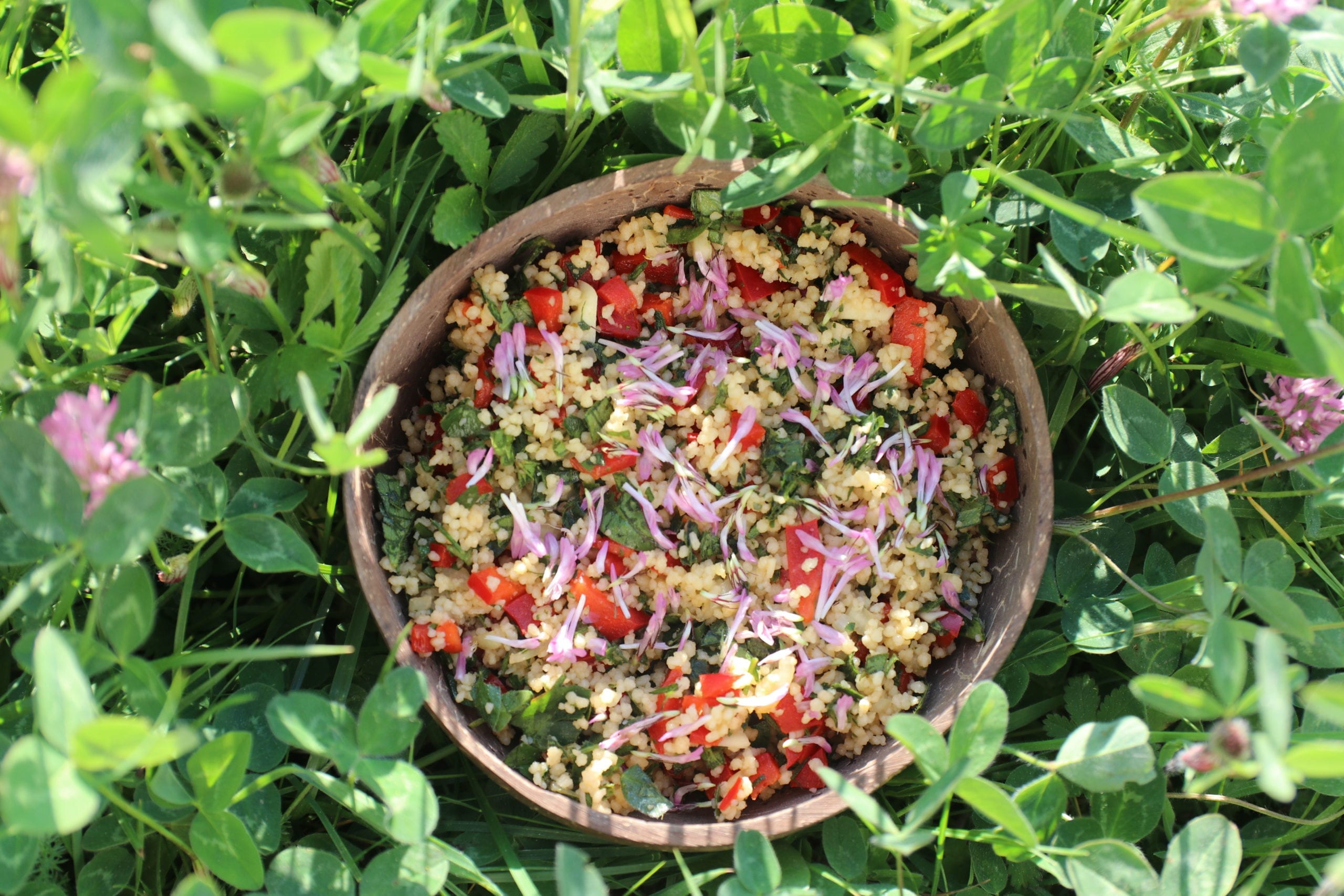
Ingredients:
- 1 heaping handful of red clover leaves (Trifolium pratense)
- 3 red clover inflorescences (Trifolium pratense)
- Prepared couscous, 4 tablespoons
- ¼ red pepper, chopped
- ½ onion, chopped finely
- 2 garlic cloves, chopped finely
- Juice from ½ lemon
- Pinch of salt
- 1 tbsp. olive oil
Instructions:
- Mix the garlic, lemon juice, olive oil, and salt together in a glass. Stir.
- Rinse & chop the red clover leaves finely.
- In a bowl, mix the red clover leaves, prepared couscous, red pepper, and onion.
- Add the liquid garlic/lemon/salt/oil mix and stir.
- Let sit for 15 minutes.
- Serve!
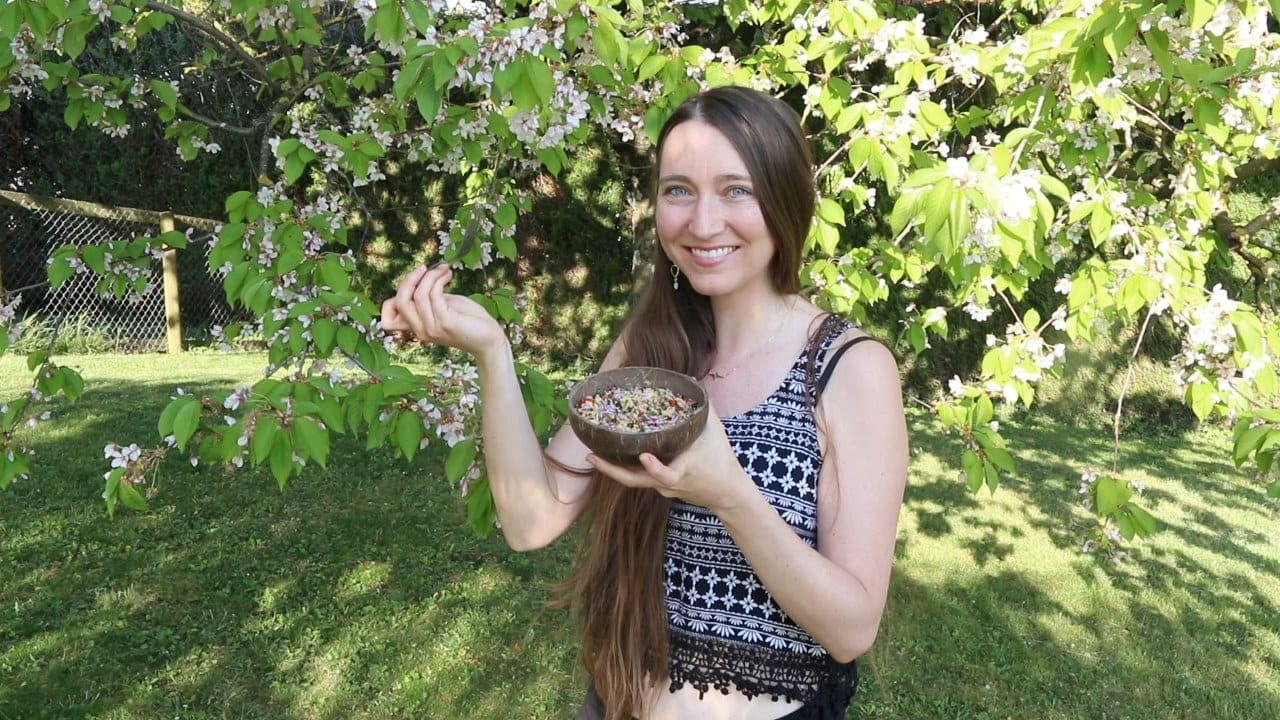
I hope you love this recipe. Let us know in the comments below if you have any red clover recipes that you love to make.
Happy foraging!
Christelle
P.S. If you enjoyed this edible plants recipe, you’ll love our other wild food recipes including our Purple Dead Nettle Tofu Scramble, Dandelion Salad, and Narrowleaf Plantain Hummus.
By commenting you accept our Privacy Policy.
Copyright © 2017 Permacrafters. All rights reserved. || Privacy Policy || Website Terms of Use || Health Disclaimer || Student Dismissal Policy ||





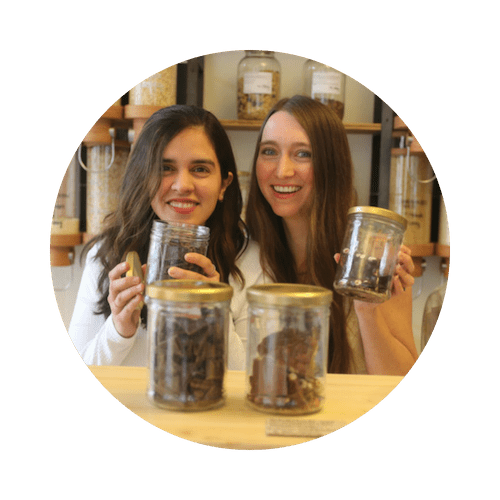
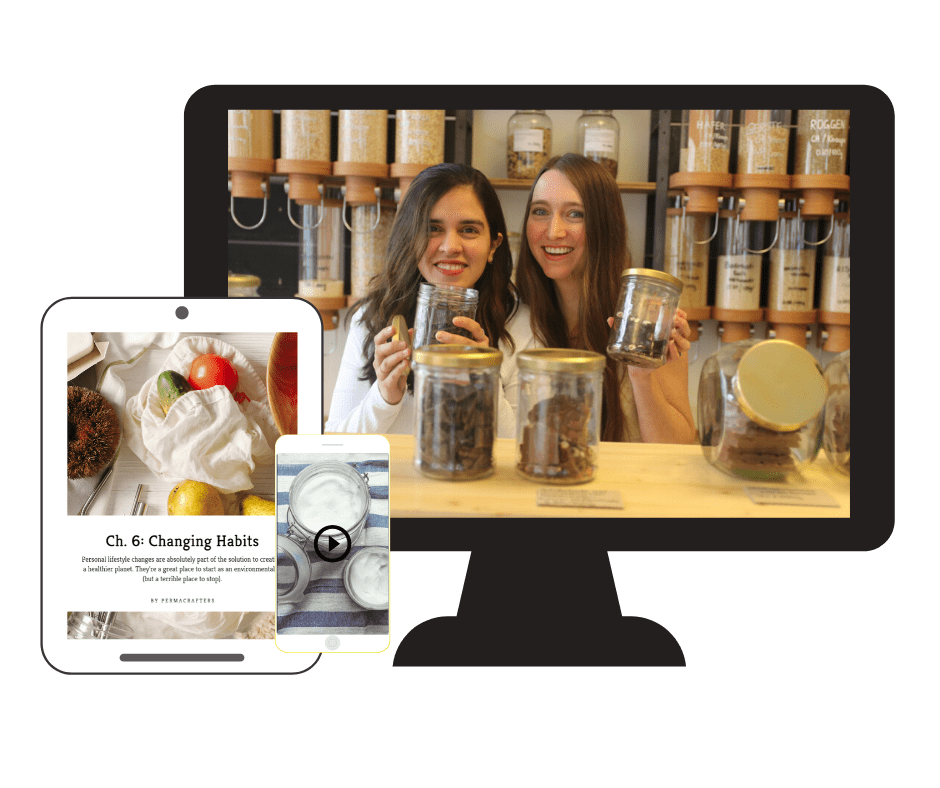
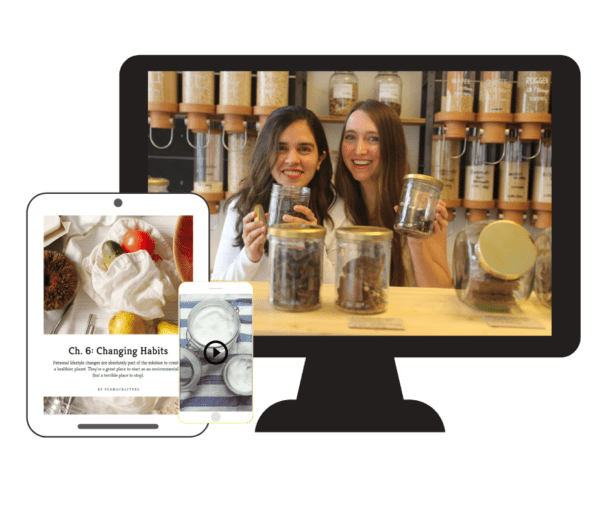
0 Comments